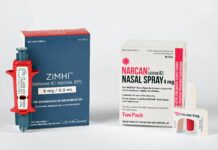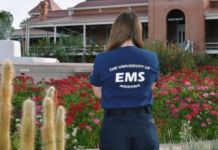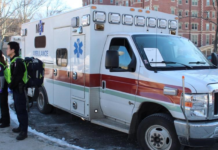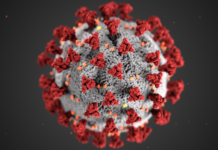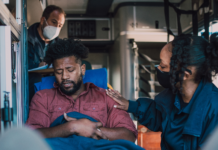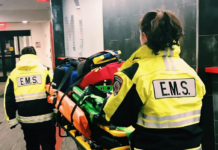Abstract
The co-ingestion of benzodiazepines and alcohol presents a unique challenge to collegiate EMS providers, due to the pharmacological interaction of the two substances and the variable patient presentations. Given the likelihood that collegiate EMS providers will be called to treat a patient who has co-ingested benzodiazepines and alcohol, this review discusses the relevant pharmacology, clinical presentation, and treatment of these co-ingestion patients.
Introduction
Collegiate-based emergency medical services (EMS) providers at both the basic life support (BLS) and advanced life support (ALS) levels may treat a higher incidence of alcohol and substance abuse related patients than providers working with traditional community EMS populations. Among the most complex of these patients are those that have ingested alcohol as well as an illicit substance and/or prescription medication. When ingested with alcohol, benzodiazepines in particular present a unique challenge to collegiate EMS providers.
Excessive alcohol misuse and abuse in the college population has been discussed in both the popular media and scientific literature. In 2016, an annual nationwide survey found that 38.4% of college-aged Americans engage in binge alcohol use, and 10.1% engage in heavy alcohol use.1 The rate of benzodiazepine use, though significantly lower than alcohol use, is still significant, as approximately 2.6% of the college-aged population is legally prescribed a benzodiazepine.2 Through national epidemiological studies, surveillance reports, and various studies on college populations, abuse and misuse of benzodiazepines appear to be on the rise.3-5 The 2013 Analgesic, Anesthetic, and Addiction Clinical Trial Translations, Innovations, Opportunities, and Networks (ACTTION) organization defines abuse and misuse of medications as “any intentional, non-therapeutic use of a drug product or substance, even once, for the purpose of achieving a desirable psychological or physiological effect” and “any intentional therapeutic use of a drug product in an inappropriate way,” respectively.6
There is limited data pertaining to the incidence of misuse and abuse of benzodiazepines in regards to alcohol co-ingestion, specifically. In a 2001 study, 4.5% of college students reported that they had ingested or consumed a benzodiazepine recreationally, but the study did not examine alcohol co-ingestion.7 There is also a limited body of literature investigating the co-ingestion of benzodiazepines and alcohol in college students specifically. One study indicated 22.6% of adult patients admitted to emergency departments in the United States in 2008 for benzodiazepine abuse reported co-ingestion of alcohol.8 Another study, which reviewed the CDC Drug Abuse Warning Network (DAWN) system, found that 27% of US adults presenting to emergency departments for benzodiazepine use had also used or misused alcohol.9 While this lack of specific research is limiting, there are well-established rates of abuse for both substances. As a result, EMS providers should be aware of, and prepared to manage, these polypharmacological presentations.
Benzodiazepines: Overview
Benzodiazepines are a class of medications commonly prescribed for a variety of out-patient conditions such as anxiety, insomnia, and seizure disorders. They are also utilized for seizure control in the Emergency Department (ED) and in the prehospital setting by ALS, as well as for anesthesia in surgical procedures. Common benzodiazepines are listed in Table 1. When taken as prescribed and under the general supervision of a physician, benzodiazepines are considered safe, even in pediatric patients.10 However, when abused or misused, benzodiazepines can be dangerous or fatal, as discussed further in this article.
Table 1. Common benzodiazepines
Pharmacology
Benzodiazepines act on gamma aminobutyric acid (GABA) receptors in the central nervous system (CNS). By increasing the effectiveness of GABA, the primary inhibitory neurotransmitter in the CNS, benzodiazepines have the overall effect of decreasing neuronal activity, which further inhibits the CNS. This inhibitory activity allows benzodiazepines to have therapeutic effects in proper doses but potentially lethal effects when used in combination with other CNS depressants.
Ethanol, which also agonizes GABA, is one of the most commonly used CNS depressants. The combination of benzodiazepines and alcohol results in significant toxicological interactions.11
While alcohol is typically only ingested in a liquid form, there are many routes of administration for benzodiazepines – injection, ingestion, insertion of a rectal suppository, or inhalation – which widely affect their onset and efficacy. As with all medications, other factors play a role including the type and quantity of benzodiazepines and alcohol consumed, patient weight, and overall patient sensitivity to the substances involved.
Clinical Manifestations
Patients who have consumed an overdose of benzodiazepines and alcohol concomitantly will most likely present to collegiate EMS providers in a similar manner as severely intoxicated patients. Hallmark clinical manifestations include decreased mental status, severe respiratory depression, as well as the additional signs and symptoms (Table 2). The time of onset of these symptoms will vary widely depending on the type and quantity of both the benzodiazepine and alcohol consumed. Some longer-lasting benzodiazepines, such a Valium, have a rapid onset and can remain active in the body for 20 to 80 hours.12 An important note for EMS providers is that patients who have consumed both alcohol and benzodiazepines may become critically ill much faster than a patient who have consumed either substance alone. As such, co-ingestion patients need to be closely monitored and may require a swifter course of prehospital management.
Table 2. Typical signs and symptoms of benzodiazepine and alcohol overdose.
The clinical manifestations of a pure alcohol ingestion versus a co-ingestion of alcohol with benzodiazepines are similar given that they both agonize the same neurotransmitter (GABA), and as such distinguishing between the two patient presentations can be difficult. When permissible and safe to do so, an extensive interview of the patient and/or bystanders, as well as a cursory examination of the scene, is essential. However, as these substances affect patients in different ways, caution must be taken when attempting to make a field diagnosis.
Guidelines for Treatment
The unpredictability of both the onset and severity of symptoms makes the management of alcohol and benzodiazepines difficult for EMS providers. Patients can present with varying degrees of intoxication, and many patients encountered by EMS may already be unconscious and may require comprehensive, supportive management under close observation. Particular attention should be given to assertive airway management in the face of the compounding respiratory depression and risk for aspiration. Though benzodiazepine and alcohol overdoses are challenging, the general principles for EMS management of polysubstance overdoses should be utilized.
BLS Providers
For BLS providers, proper positioning with bag-valve mask (BVM) management, oxygen titrated per local protocol, and airway adjuncts as tolerated may be indicated. Airway suctioning may also be needed and should be readily available. In an attempt to determine the type and quantity of all substances consumed, a thorough interview of bystanders and an investigation of the scene may also help. The BLS provider should also have a high index of suspicion for both head trauma and opioid co-ingestion, the latter of which can be managed with naloxone, according to local protocols. Early notification of ALS and a thorough report of initial findings can be essential in managing these patients.
ALS Providers
ALS providers should perform a complete physical assessment with a similar emphasis on airway management. Depending on local protocols, endotracheal intubation or rapid sequence intubation may be indicated to control the patient’s airway. After advanced airway placement, suctioning may help treat aspiration, maintain a patent airway, ensure better oxygenation, and prevent the clogging of monitoring equipment such as end-tidal CO2 (EtCO2). Vascular access should be established and fluid therapy should be initiated if hypotension is present. Though unusual, hypotension may be severe enough to warrant the use of a vasopressor if permitted by local protocol. An electrocardiogram (EKG) should be performed as hypoxia can result from associated cardiac ischemia and instability.
Self-Harm & Scene Safety
Both ALS and BLS providers should have a high index of suspicion for a polysubstance overdose, and the potential that the overdose was intentional. Scene safety best practices should be adhered to per local protocol and agency policy, and the possibility of a self-harm attempt should be explored in depth at patient turn-over to ensure that emergency department personnel request the appropriate mental health evaluation and treatment prior to patient discharge.
Flumazenil (Romazicon)
Flumazenil (Romazicon) has been used to treat benzodiazepine overdose by ALS in the prehospital setting and by practitioners in the emergency department. Flumazenil is a selective GABA receptor antagonist that reverses the effects of benzodiazepines. Though some prehospital services still carry the medication, it has significant contraindications and its use can often be problematic.13 Flumazenil can cause cardiac dysrhythmias and seizures, which in turn will become more difficult to treat given that the treatment for seizures in the prehospital setting is a benzodiazepine. By reversing the sedative effects of the benzodiazepines, a patient may be at a higher risk of aspiration upon rapid awakening and require rapid extubation. Because there is competing literature on the safety of flumazenil, it may be more appropriate to provide supportive treatment in the emergency department or intensive care unit (ICU) while benzodiazepines are metabolized by the body.14 If flumazenil is administered, it should be utilized carefully per local protocol and in doses titrated for effect.
§
Collegiate-based EMS providers should familiarize themselves with their local protocols regarding polypharmacological overdoses, the equipment and resources required and available to them, and the efficacy of medication-based treatments in their patients.
Prevention
Collegiate-based prehospital providers should work closely with their student health and wellness services to provide screening opportunities and risk reduction education. A common and effective screening tool aimed to help recognize and stop alcohol and illicit drug use is SBIRT (Screening, Brief Intervention, and Referral to Treatment).15 Additionally, many college campuses utilize the educational harm-reduction program BASICS (Brief Alcohol Screening and Intervention), which is designed for college students at risk for alcohol abuse.16
Additionally, because many colleges have their own law enforcement departments, college EMS organizations should work closely with these officers to gain a better understanding of what substances are being utilized on their campus, with a larger goal of better anticipating patient care needs.

